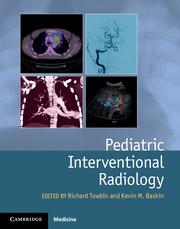1 - Introduction
Published online by Cambridge University Press: 05 June 2015
Summary
History
The subspecialty of interventional radiology has its roots in the late 1950s and early 1960s with the development of catheterization techniques for cardiovascular angiography. The following two decades resulted in a remarkable growth and development of both diagnostic radiologic techniques and biologically compatible materials. This evolution of equipment and methodology has played a major role in the development, acceptance, and utilization of interventional radiology.
Cross-sectional imaging with ultrasound (US), computed tomography (CT), and magnetic resonance imaging (MRI) has, in most instances, allowed the radiologist to accurately localize and describe a pathologic process anywhere in the body. More recently, the addition of positron emission tomography (PET) has allowed radiologists to observe the regional physiology of a lesion and help plan interventional procedures accordingly. Using these powerful imaging techniques, the interventionalist can plan the safest approach to the lesion and target the most active region while avoiding uninvolved structures.
The development of new devices, especially in small sizes, has led to an ever-increasing number of non-vascular and vascular interventional procedures in the pediatric population. The advances in materials were generally targeted for use in the adult population. However, it was not long until children were also benefiting as a result of the creativity of interventionalists working with all ages and sizes of pediatric patients. Over the last several years there has been a substantial increase in the number of interventionalists specifically trained to treat children as well as a rapid growth in the number of interventional procedures being performed.
An overview of our practice growth over the last three decades defines the changes that have occurred in the field. In the late 1970s we began to make the transition in the name of the specialty from special procedures to interventional radiology. In the early years the practice consisted mainly of the “ographies” – diagnostic angiography, myelography, arthrography, etc. In this period a busy service might do 50 to 75 cases per year. The introduction of cross-sectional imaging with CT and US significantly propelled the field of pediatric interventional radiology forward.
- Type
- Chapter
- Information
- Pediatric Interventional Radiology , pp. 1 - 21Publisher: Cambridge University PressPrint publication year: 2015



